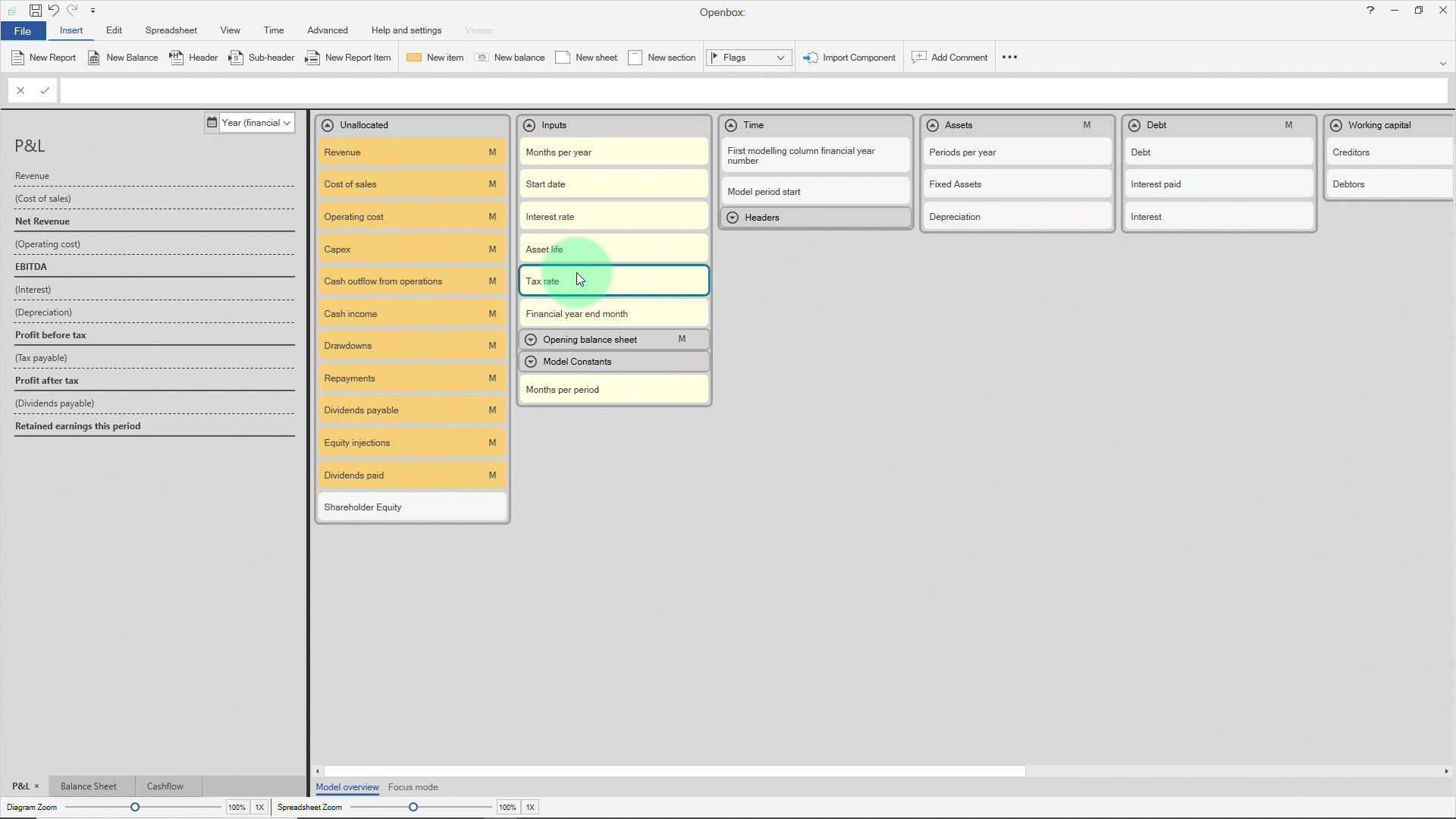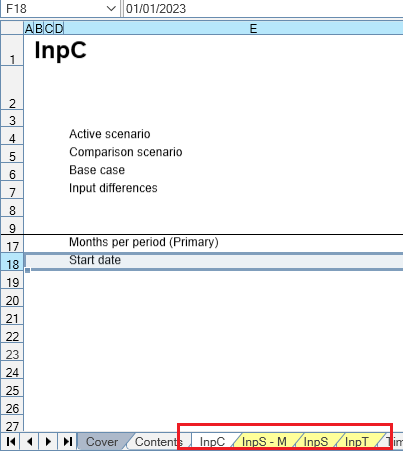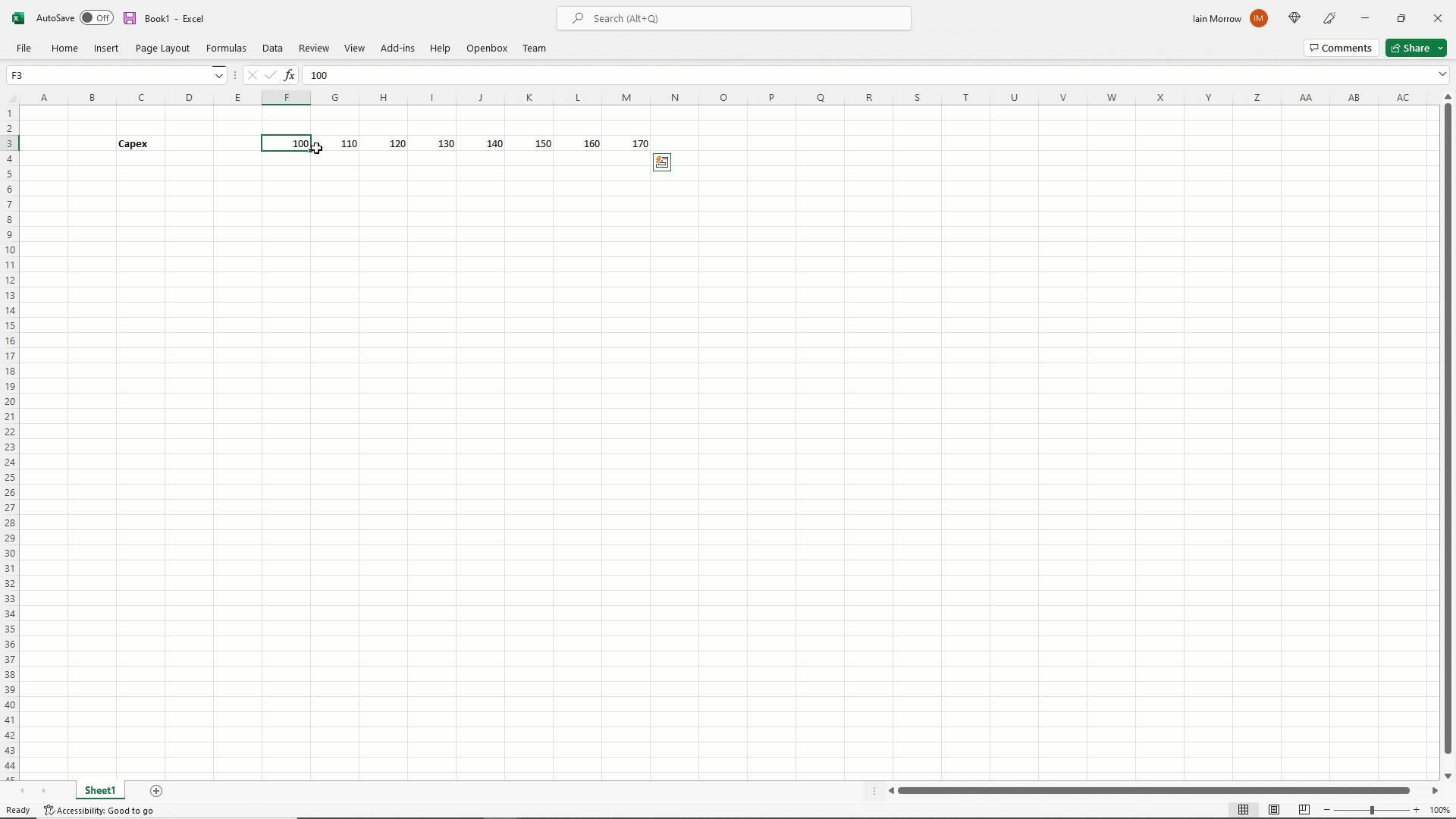Add inputs to the model
Adding simple inputs
For inputs which are constants, the easiest way to add them is just to type in the Openbox formula bar. The approach is just like in Excel: press F2 or click in the formula bar, type the input, and then click the tick or press Enter/ Return.

Input sheets
When looking at the preview, you might have spotted that there’s more than one input sheet.
What do these mean? Well, Openbox lets you separate different types of input. Some people like to have all inputs on a single sheet. And in the open box layout options you can choose that.
But other people like to separate constants, series and table inputs, because those inputs are naturally laid out very differently.
Let’s look at these input sheets.

First, InpC. This sheet contains only constant items – ones that don’t change over time. It comes with a scenario selector that allows you to specify different values and switch between them. These can be thought of as key levers that you can pull and change the model’s results.
Then, InpS. This is the Series sheet, which is where all inputs that vary over time go. Examples might include number of employees, inflation and so on.
Note that there are two of those sheets. Remember that a model can have two timelines. If you’re modelling the construction and operation of a new road, for example, you might have the construction on a monthly basis and the operations on a quarterly basis.
You might need inputs on a monhtly basis (say, capex for the construction period) and on a quarterly basis (say, number of cars that pay the road toll, per quarter, during operations). It would be confusing to have these on the same sheet,
Finally, there is InpT for table. Often you have a table of data that you want to include in your model, and that doesn’t fit well with series data or constant data. So open box puts it on a separate sheet, which means it’s clearer to see what’s going on.
And crucially. you can edit the inputs in any of these sheets directly – see below.
Adding more complex inputs
OK, so we have seen how to add simple inputs (a constant tax rate or date for example). Now, let’s see how to add some more complex inputs.
Maybe there’s a time series, for example, that we’ve got from the client and we want to put it into the model.
The simplest way to do this is just how you would do it in Excel – copy and paste it in. Let’s suppose we have this Excel file from the client. We select the input data, press copy, then switch to the preview. Select the corresponding cell of the input sheet and press Control V to paste. Done.

Reader interactions
2 Replies to “Add inputs to the model”
Leave a Reply Cancel reply
You must be logged in to post a comment.
Would like to know how to add in bulk input AND data labels i.e. rather than creating the item and copying in the values, creating items in bulk, such as an entire balance sheet.
Hi Gverbeeck, I’m not an expert in the tool, currently spending time to learn it so take what I say with a grain of salt, I think you have two ways to do it.
1 – Paste directly your Labels and values in the Spreadsheet preview of Openbox, update with F9 and openbox interface should now have your items. I haven’t tried yet but I am assuming you need to respect the layout of the input sheet, i.e. pasting labels and numbers in the correct columns.
2 – Copy your label from excel and do “paste into new report” (button is in the openbox ribbon under “insert”, next to “new report item”. This will automatically create all the items in bulk. Then hit F9 to update the Excel preview, go to the input sheet and copy and paste the value there.